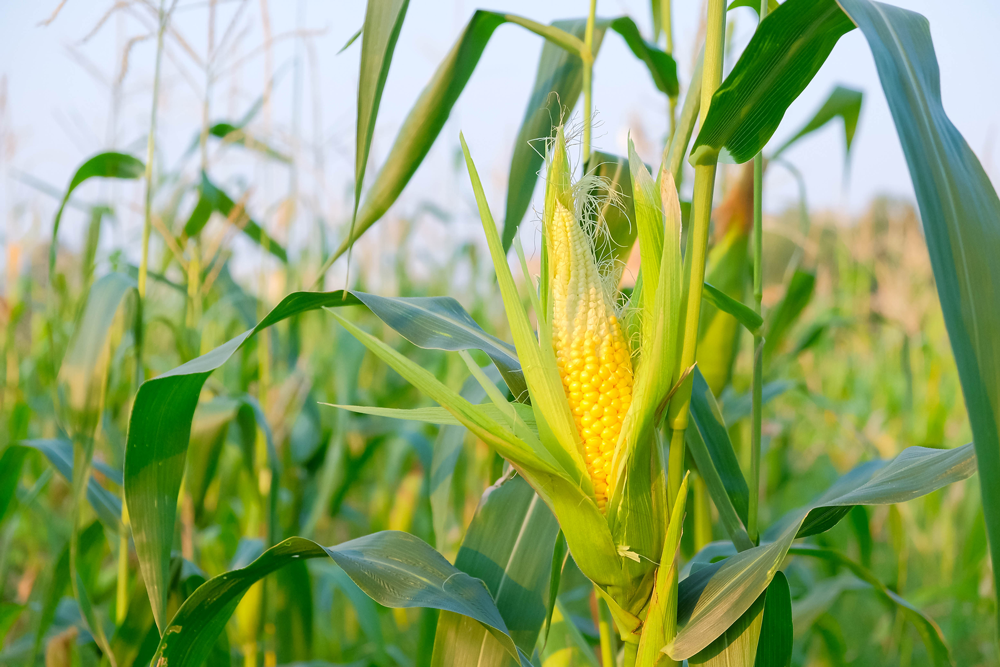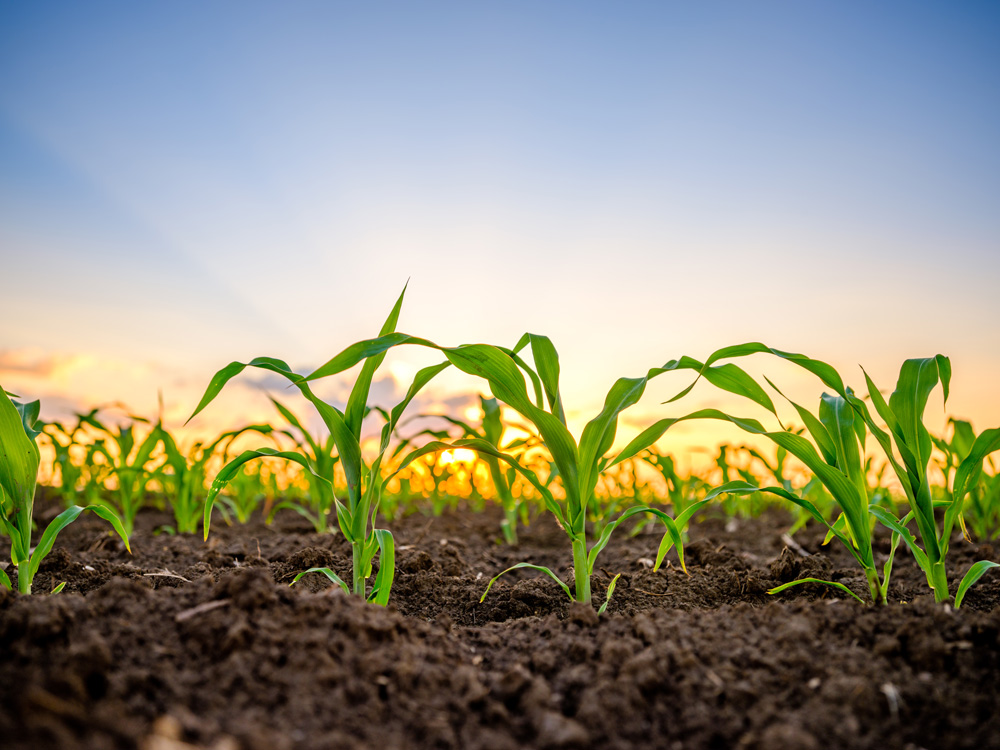
 Share
Share One of the steps taken by our company to meet the rapid development of cattle breeding and poultry, production of grain and fodder crops in our republic at the expense of internal resources is the organization of cultivation of high-yielding corn varieties on the basis of intensive technologies in our farms. The reason why corn is a valuable plant for cattle breeding is that it is useful for all types of animals and birds as a source of highly nutritious mixed and juicy feeds. It can be used as grain, silo, fresh green feed and processing waste and has the ability to to solve several problems at the same time. For corn, a number of plants can be taken as its forecrop. However, the best forecrops are autumn wheat, barley, rye, cereals and legumes, perennial feed, intertilled vegetables. Corn itself is a good forecrop for autumn and spring crops. When planting corn, unlike other cereals, its geographical distribution must be taken into account, and the natural conditions associated with it, the purposes of cultivation (feed or food) must be taken into account. Corn does not grow well in very acidic soils. For its normal development, the reaction of the soil environment must be neutral (pH-6-7). Therefore, during the cultivation of this plant, it is necessary to choose the appropriate agro-technical measures for the plant, taking into account the biological characteristics of the plant on the one hand, and the local soil and climatic conditions on the other hand.
Soil cultivation  The field where corn will be planted is first covered to a depth of 8-12 cm after the forecrops. This operation has a positive effect on the shredding of plant remains from the previous forecrop, the softening of the top of the soil, the germination of weed seeds and their subsequent mechanical destruction, retention of moisture, and other processes. Although ploughing is traditionally carried out at a depth of 25-30 cm in the field where corn will be planted, in recent years it is considered necessary to carry out deep softening at a depth of 35-45 cm with a rapper or deep softener in order to destroy the compacted layer formed by anthropogenic and natural factors in the soil. In lands on which long-term agricultural activities are carried out, it is expedient to carry out this process every 5 years, in newly acquired lands and soils with low organic matter content and weak water-physical properties. As a result of the said operations, the water-physical properties of the soil and the aeration process in the soil improves. In order to prepare the soil before sowing, the top layer of soil is processed with a complex cultivator 1-2 days before sowing. This time, attention must be paid to ensure that the direction of movement of the cultivator is at a certain angle from the direction of sowing. At the same time, the smoothness of the soil surface, the size of soil particles at a depth of 10 cm, complete coverage of the seed and compliance with the compactness requirement, complete destruction of sprouted crops and weeds in the soil, as well as the accumulation of plant remains on the working bodies of the unit must be monitored. Pre-sowing cultivation of soil allows normal preparation of the seed bed and burial of seeds to normal depth. As corn is a heat-loving plant, it must be planted when the soil temperature is 8-1 °C. Mass sprouts are obtained when the soil temperature is 10-12 °C. The optimum temperature for normal growth of plants is considered to be 20-25 °C. Sowing times of corn are different in different soil-climatic zones. When the soil moisture is normal, the depth of seed burial is 8-10 cm. In soils with heavy mechanical composition, it must be reduced to a depth of 6-7 cm. The sowing rate is determined in accordance with the number of 80 thousand plants in 1 ha field. The distance between rows is 70 cm and the distance between plants is 18 cm.
The field where corn will be planted is first covered to a depth of 8-12 cm after the forecrops. This operation has a positive effect on the shredding of plant remains from the previous forecrop, the softening of the top of the soil, the germination of weed seeds and their subsequent mechanical destruction, retention of moisture, and other processes. Although ploughing is traditionally carried out at a depth of 25-30 cm in the field where corn will be planted, in recent years it is considered necessary to carry out deep softening at a depth of 35-45 cm with a rapper or deep softener in order to destroy the compacted layer formed by anthropogenic and natural factors in the soil. In lands on which long-term agricultural activities are carried out, it is expedient to carry out this process every 5 years, in newly acquired lands and soils with low organic matter content and weak water-physical properties. As a result of the said operations, the water-physical properties of the soil and the aeration process in the soil improves. In order to prepare the soil before sowing, the top layer of soil is processed with a complex cultivator 1-2 days before sowing. This time, attention must be paid to ensure that the direction of movement of the cultivator is at a certain angle from the direction of sowing. At the same time, the smoothness of the soil surface, the size of soil particles at a depth of 10 cm, complete coverage of the seed and compliance with the compactness requirement, complete destruction of sprouted crops and weeds in the soil, as well as the accumulation of plant remains on the working bodies of the unit must be monitored. Pre-sowing cultivation of soil allows normal preparation of the seed bed and burial of seeds to normal depth. As corn is a heat-loving plant, it must be planted when the soil temperature is 8-1 °C. Mass sprouts are obtained when the soil temperature is 10-12 °C. The optimum temperature for normal growth of plants is considered to be 20-25 °C. Sowing times of corn are different in different soil-climatic zones. When the soil moisture is normal, the depth of seed burial is 8-10 cm. In soils with heavy mechanical composition, it must be reduced to a depth of 6-7 cm. The sowing rate is determined in accordance with the number of 80 thousand plants in 1 ha field. The distance between rows is 70 cm and the distance between plants is 18 cm.

Corn is a plant that requires nutrients. Therefore, before planting, it is required to determine the amount of nutrients in the soil and determine the amount of nutrients accordingly. In addition to this, there is a need to determine the dynamics of nutrient uptake through soil and plant analysis at different stages of vegetation and to adjust the fertilization program according to it. With 1 tonne of corn product (grain) takes 30 kg of nitrogen, 10 kg of phosphorus and 29 kg of potassium from the soil. Therefore, fertilizer rates are calculated based on the nutrients in the soil and the planned yield. Phosphorus and potassium fertilizers are applied in the autumn. And 30% of nitrogen fertilizers (ammonium nitrate, cabramide, etc.) are applied with sowing, and the rest in the form of feeding during the vegetation period.
 Although corn is more demanding to nitrogen and phosphorus during the initial growth and development period, in addition to these fertilizers, there is a serious need for micro-fertilizers to obtain a quality product. Therefore, it is considered expedient to apply complex fertilizers containing 1-1,5 kg of Cu, Fe, Mn, Mo, Zn per hectare. Corn is very sensitive to irrigation. Irrigation must be carried out during the development phases of the plant by monitoring the moisture dynamics in the appropriate soil. Although the water demand of corn is low during the initial development period, this demand begins to increase towards the end of the vegetation period. With a planned yield of 10 tons per hectare, the vegetation irrigation norm for corn is 9800 m3/ha.One of the main factors that negatively affect the productivity and quality of the plant in all corn farms is the level of being weeded, pests and diseases. Depending on the natural and climatic conditions, autumn earworm, pests of corn, corn and meadow brown, oulema melanopus among pests, Head smut və Common Corn Smut – Ustilago, helminthosporiosis, stem, the cob and grain bacteriosis, red smut, rust, and etc. among diseases are widespread in the corn in different regions and seriously damage the productivity. Therefore, in order to fight against these diseases and pests, there is a need to develop a pre-treatment program, taking into account the natural climatic conditions of the area, the biology of diseases and pests, weeds. In addition to this, there is a need for continuous monitoring (scouting) in the fields during the vegetation period and preventive fight against diseases and pests. However, it must be kept in mind that the said control measures are needed when the number of diseases and pests exceeds the economic damage limit.
Although corn is more demanding to nitrogen and phosphorus during the initial growth and development period, in addition to these fertilizers, there is a serious need for micro-fertilizers to obtain a quality product. Therefore, it is considered expedient to apply complex fertilizers containing 1-1,5 kg of Cu, Fe, Mn, Mo, Zn per hectare. Corn is very sensitive to irrigation. Irrigation must be carried out during the development phases of the plant by monitoring the moisture dynamics in the appropriate soil. Although the water demand of corn is low during the initial development period, this demand begins to increase towards the end of the vegetation period. With a planned yield of 10 tons per hectare, the vegetation irrigation norm for corn is 9800 m3/ha.One of the main factors that negatively affect the productivity and quality of the plant in all corn farms is the level of being weeded, pests and diseases. Depending on the natural and climatic conditions, autumn earworm, pests of corn, corn and meadow brown, oulema melanopus among pests, Head smut və Common Corn Smut – Ustilago, helminthosporiosis, stem, the cob and grain bacteriosis, red smut, rust, and etc. among diseases are widespread in the corn in different regions and seriously damage the productivity. Therefore, in order to fight against these diseases and pests, there is a need to develop a pre-treatment program, taking into account the natural climatic conditions of the area, the biology of diseases and pests, weeds. In addition to this, there is a need for continuous monitoring (scouting) in the fields during the vegetation period and preventive fight against diseases and pests. However, it must be kept in mind that the said control measures are needed when the number of diseases and pests exceeds the economic damage limit.
It must be noted that 55-80% of diseases of the corn plant are transmitted by grain, and therefore one of the main control measures must be to pay attention to the timely and quality treatment of the seed material or prefer using the sprayed seeds.